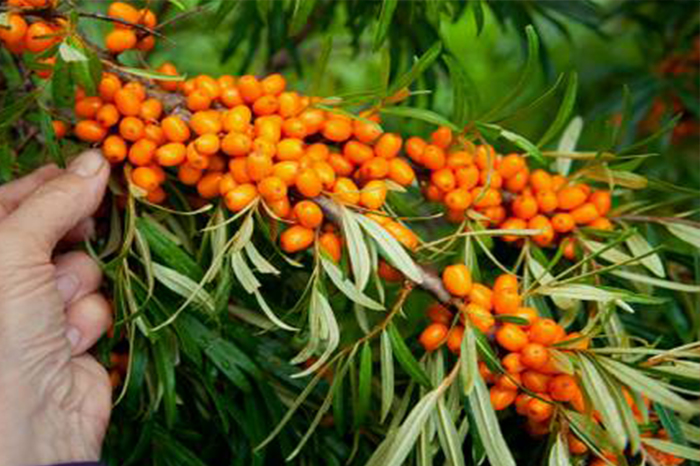High in the Himalayas, among the landscape of eight of the ten highest mountains in the world, a huge variety of plant species occurs due to the climate, which varies from tropical at the foot of the mountains to eternal snow and ice on the peaks. It is known that rhododendrons grow only on the windward slopes of the Himalayas.
However, nature here gives people much more than just a breathtaking view of this national Nepalese plant. Some of the most amazing herbs that were historically grown here, and today they remain the building blocks of traditional Tibetan medicine or Ayurveda. One of them is the Alpine sea buckthorn (Hippophae tibetana).
Tibetan sea buckthorn (Hippophae tibetana)
He is not a sea buckthorn, like sea buckthorn. From the point of view of useful substances for our health, it is ideal if the native clean habitat remains in his homeland. Tibetan sea buckthorn is grown in the mountainous and alpine regions of South Asia, at an altitude of 3500 meters above sea level, so it rightfully belongs to the label “northern lemon”. Ideally, if its processing takes place within a few hours directly at the harvest site, usually in the evening, when the sun ceases to warm and the first dew of the fruit peel appears. Their juice is finely filtered and stored in special vacuum containers. In full and unchanged form, it is transported in air-conditioned containers directly to local buyers, who thus receive the original quality product in its pure and natural form.
Sea buckthorn juice and oil are natural sources of vitamins and other biologically active trace elements for an exhausted body, both physically and mentally. We hear its other designation as the plants of the future. Sea buckthorn fruits contain a high proportion of vitamin C and are found in folk medicine of many peoples: in the traditional medicine of the Chinese, Indians, pastoral peoples of Mongolia, but also, for example, among the inhabitants of Siberia. It even flourished in Russia: doctors successfully used it to treat wounds and skin defects (or to encourage the emaciated body) of soldiers during World War II. Sea buckthorn fruits are valued for their high content of vitamins C, A, B, E, F, D, K and routine, which prevents the breakdown of vitamin C. This explains why sea buckthorn retains vitamin C during drying and heat treatment. It has 25 times more vitamin C than an orange.
beta-carotene together with the antioxidant vitamin E contributes to the regeneration and nutrition of the skin, as well as its protection from UV radiation. The folic acid contained is especially necessary during hematopoiesis and during pregnancy for the proper and healthy development of the fetus. The tannins of sea buckthorn oil have a detoxifying effect.
When cold pressed, it retains all biologically active substances that are important for our health. In addition to vitamins, sea buckthorn oil contains mainly essential fatty acids: polyunsaturated Omega-3, 6 and monounsaturated Omega-7 and 9. Polyunsaturated fatty acids have a complex effect on human health: they positively affect the cardiovascular system, support memory and cognitive functions of the brain, protect our cells from damage. Omega-7 acid (palmitoleic acid) acts on burns and is a very popular component of cosmetics.

Leave a Reply